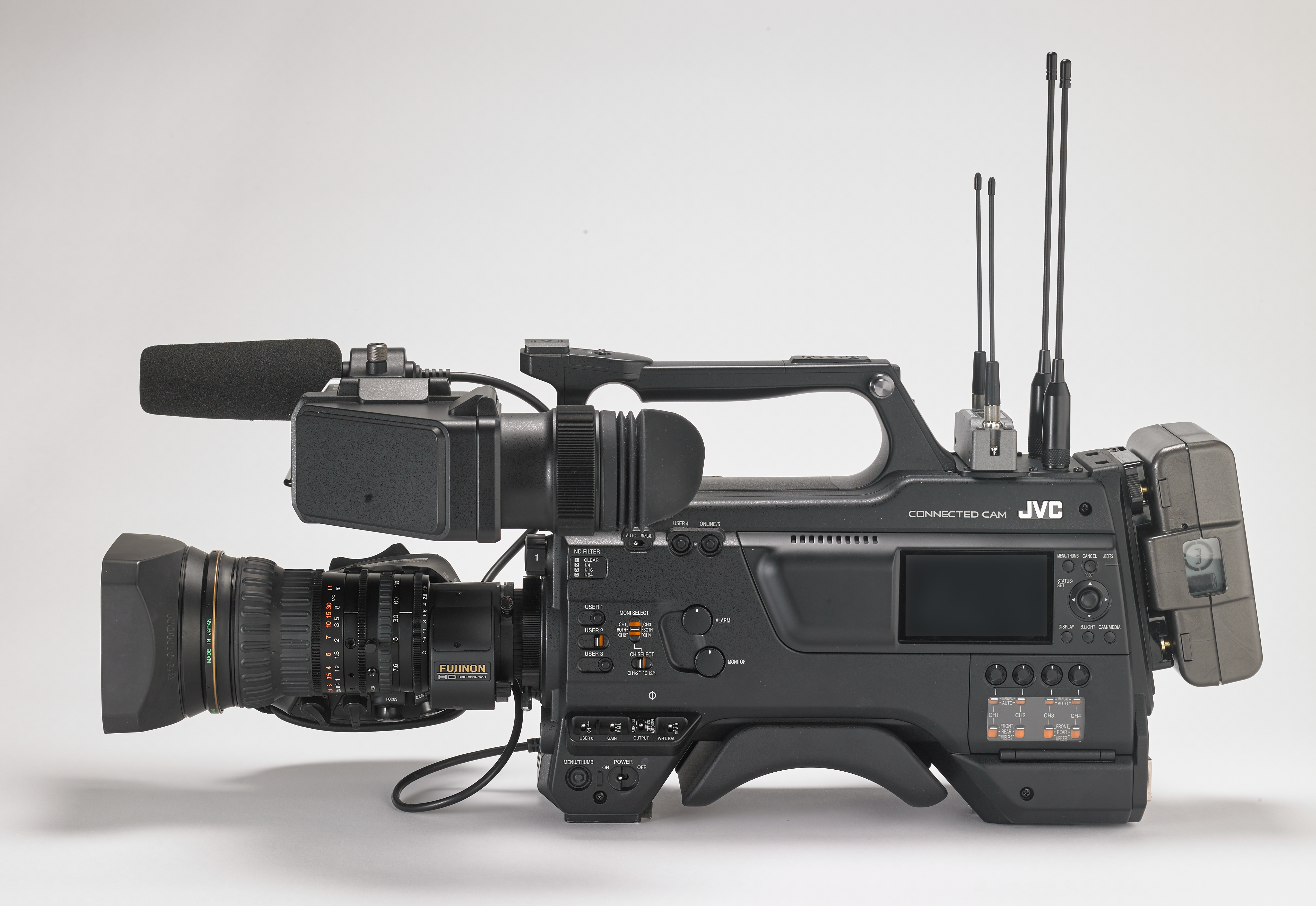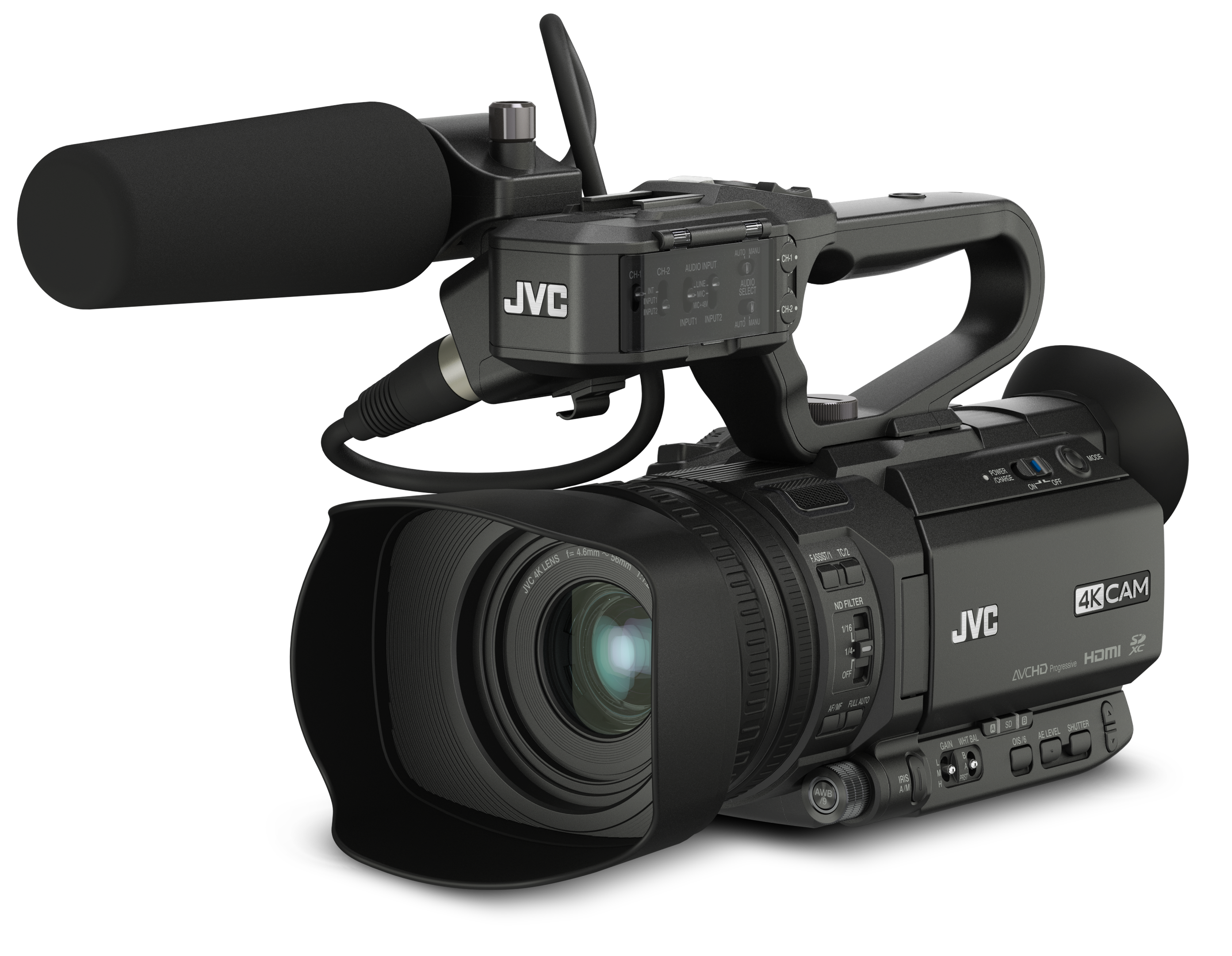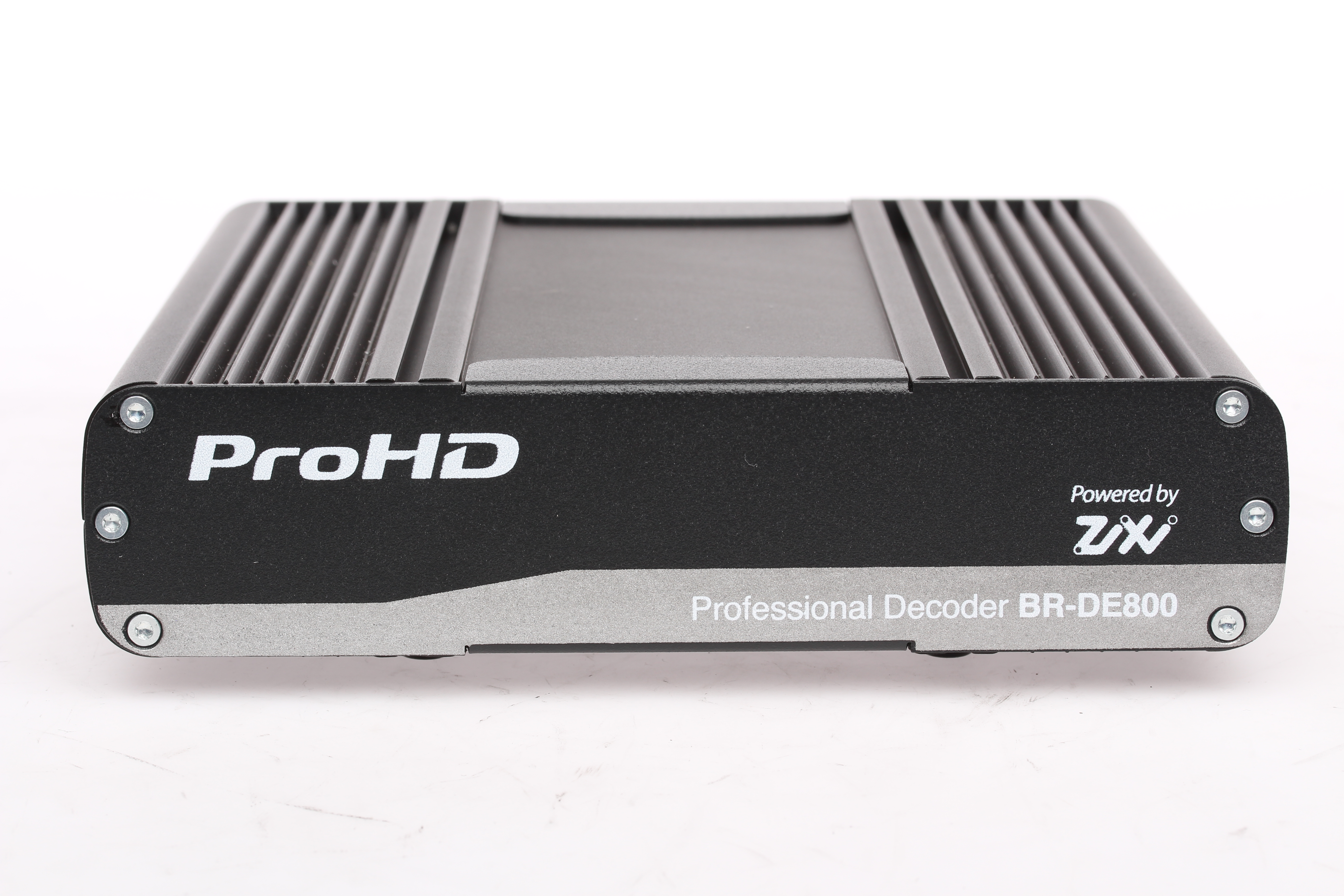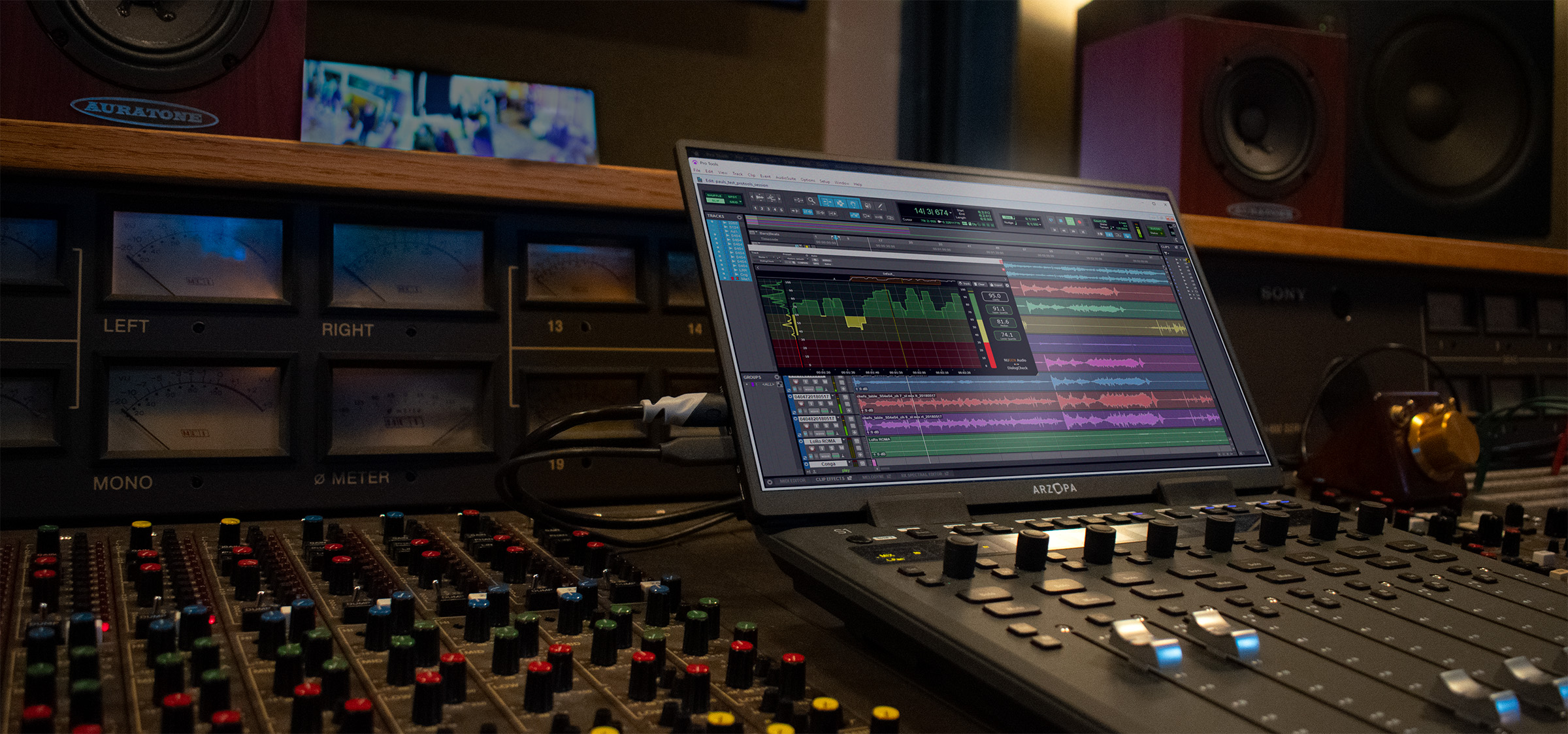JVC Launches 'CONNECTED CAM' Camcorder at NAB Show
LAS VEGAS—At the 2018 NAB Show, JVC Professional Video, a division of JVCKENWOOD USA Corporation, unveiled a broad range of new products, including the CONNECTED CAM, which provides for what the company calls "a complete news-over-IP workflow solution in the field."
The GY-HC900 “CONNECTED CAM” broadcast camcorder features three 2/3-inch CMOS image sensors for full HD imagery, as well as enhanced connectivity. When paired directly with the optional ProHD Dockable Bridge or via Wi-Fi with any ProHD Bridge unit, the new GY-HC900 allows on-air talent to conduct a two-way interview with return video while streaming live to air without any external boxes or backpacks. It is JVC’s first camera featuring a new communications engine that optimizes both image processing and IP performance. The engine enables simultaneous recording, low latency streaming, and simultaneous decoding for return video and IFB. Latency can be as low as 500ms for both outgoing and incoming video.

The GY-HC900’s complete IP workflow includes streaming performance up to 20 Mbps and built-in Wi-Fi (2.4Ghz/5GHz) with dual external antennas. The camera also features Zixi error correction with automatic repeat request (ARQ) and SMPTE 2022 forward error correction for reliable transmission.
Beyond ENG, the GY-HC900 also targets high-end EFP and studio fiber applications. It works with the FS-900 camera module, which attaches seamlessly to the camera via a 68-pin interface, and feeds 3G-SDI signals, control, audio, sync, and intercom to a base station via fiber.
ENHANCED 4KCAM
JVC also launched two new 4K cameras at the show. Designed for enhanced single-camera production, the GY-HM250U and GY-HM250SP both feature built-in streaming with Wi-Fi and 4G LTE-connectivity providing live access to Facebook Live, YouTube, and other CDNs. The cameras also work as part of JVC’s S.L.I.M. multi-camera production system, which uses the RM-LP100 remote camera control as a CCU for JVC IP-capable cameras.

The GY-HM250U integrates lower-third and full-screen titling without an external CG or production switcher for both recorded or streamed video output. Lower-third graphic overlays may be generated and controlled using a tablet, smartphone or other browser-equipped device, and logos or icons can be uploaded and displayed in the lower-third of the recorded video. With the in-camera storage for up to 50 .JPG or .PNG graphics, such as team logos or religious icons, users can manually advance the full-screen graphics, or present them as slideshows with user-defined timing during production.
Also joining the 4KCAM product line is the GY-HM250SP, which adds sports-specific score overlays, while a third new model, the GY-HM180U offers 3G-SDI and live 4K via HDMI output, only without built-in streaming or graphics. The GY-HM250SP’s score overlays—for football, baseball, basketball, hockey, soccer, and volleyball—can be placed in various screen positions. Scores can be updated using an external Wi-Fi connected smartphone or tablet, or real-time scoreboard data delivered automatically via wireless connection to a Sportzcast Scorebot integrated with the venue’s scoreboard.
Both new 4KCAM models feature 4:2:2 recording for 4K/30p and 4K/24p and a 4K/60p HDMI output; a tele-macro shooting mode for greater focusing on close objects; and a new Zero Config function that provides automatic, one-click configuration when the camera joins the same LAN as other cameras. All three models record footage in a variety of file formats and frame rates, including up to 120fps slow motion, to economical Class 10 SDHC/SDXC memory cards.
PROHD DECODER
When paired with JVC IP-enabled cameras, the new JVC BR-DE900 ProHD decoder provides bandwidth-efficient, error-free streaming over any IP network. When paired with the JVC BR-800 ProHD Broadcaster streaming server, the BR-DE900’s H.264 codec—and integrated Zixi or SMPTE 2022 Pro-MPEG stream protection technologies—enable broadcast-quality video to be delivered anywhere over public networks.

Designed for field use and fly packs, this low-latency appliance supports H.265 and H.264 compression standards with versatile A/V connectivity for ENG field reports and other video-over-IP applications. It also enables reliable HEVC decoding or H.264 streams up to 10-bit 4:2:2 1080p/60, with bit rates up to 50 Mbps, and dual 3G-SDI, HDMI 2.0, and composite connectivity.
PRODUCTION SWITCHER
Also new is the ProHD Studio 4000 compact live production and streaming studio. Also available as the ProHD Studio 4000S for sports production, the self-contained, four-channel system includes a complete control room solution for smaller, budget-conscious facilities.
The ProHD Studio 4000 includes four SD/HD-SDI inputs, four IP stream inputs, and four NDI inputs. An additional HDMI/NDI input with keying can capture an external screen, so users can include content from a smartphone or PowerPoint presentation. Users can record the program output and the streaming output, along with simultaneous ISO recording of all cameras, directly to the ProHD Studio 4000.
Unique features include automatic motion tracking for JVC KY-PZ100 PTZ cameras, as well as Zero Config, which provides automatic, one-click configuration of any IP-enabled JVC camera when it joins the same LAN as other JVC cameras. The ProHD Studio 4000 also includes an integrated remote control for JVC cameras, including full PTZ control for the KY-PZ100. For live sports production, the ProHD Studio 4000S adds automated multi-channel instant replay and slo-mo, as well as an integrated sports CG for scores and timers
LCD MONITORS
To support today’s growing 4K workflows, JVC also introduced new DT-U and DT-G series LCD studio monitors that feature multiple 4K inputs, including 12G-SDI, 3G-SDI quad link, 4K/60p HDMI 2.0, and more, as well as display of four independent SDI sources in quad view mode.
Designed for critical video applications, the DT-U series provides native 4K-resolution with 10-bit color depth and HDR compatibility, while the more economical DT-G series converts 4K and 2K sources to full HD. Both offer zero latency image processing, remote control via a web browser, built-in auto calibration, color generator and calibration software, and support for user-uploaded 3DLUT cube files for color creation in post.
Available in the fall of 2018, the DT-U series includes: the 28-inch DT-U28U and 31.5-inch DT-U31U, which feature native 3840x2160 4K-resolution, LED backlight, wider color gamut and HLG HDR and PQ HDR display for more realistic imagery. And with sizes ranging from 17.3 to 27 inches, DT-G series monitors—including the DT-G17U, DT-G21U, DT-G24U and DT-G27U—support 4K/60p HDMI and 2K-SDI signals. Available this summer, the DT-G monitors feature an 8-bit panel with 10-bit signal processing and LED backlight, with the three largest models offering a 1000:1 contrast ratio.
Get the TV Tech Newsletter
The professional video industry's #1 source for news, trends and product and tech information. Sign up below.

